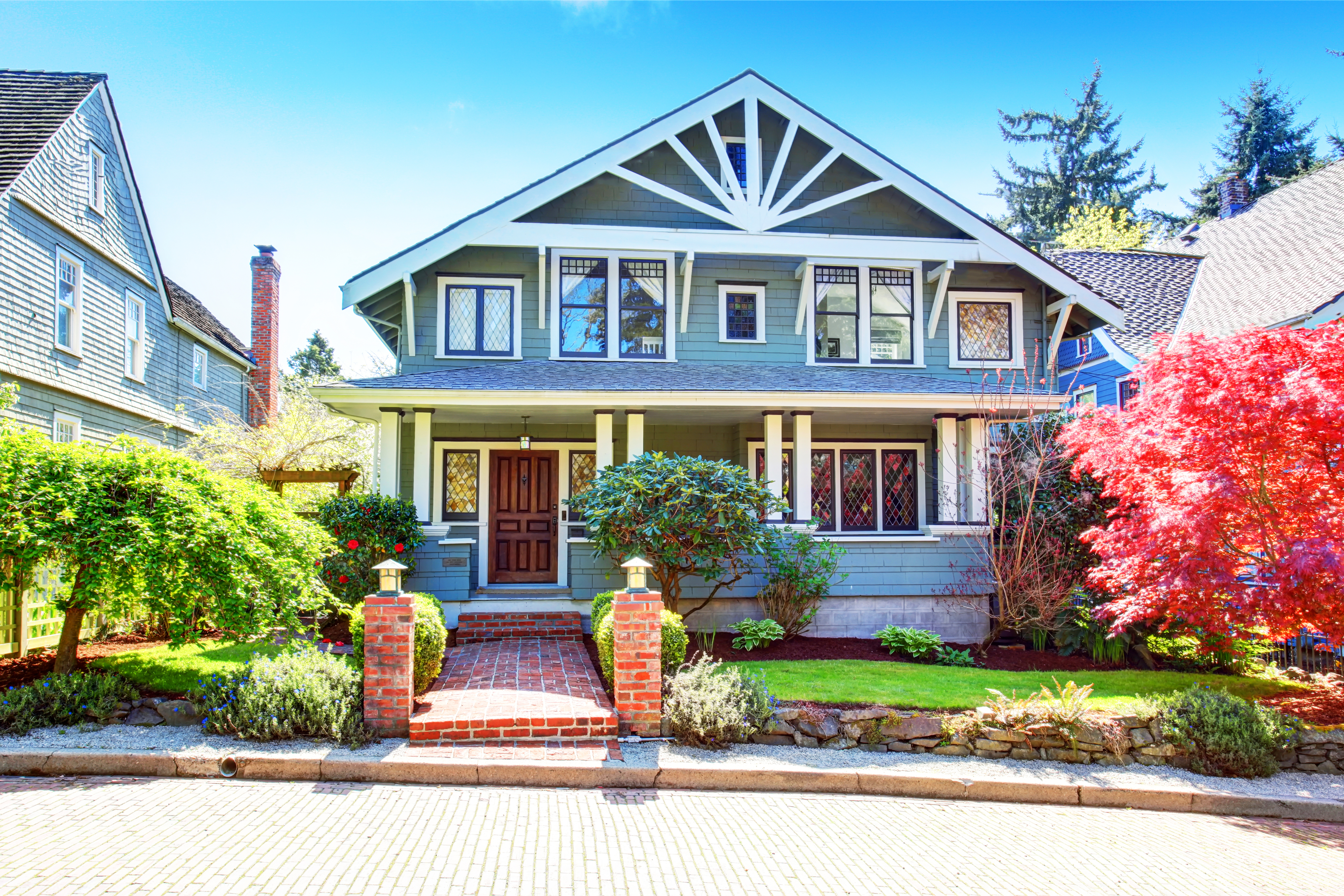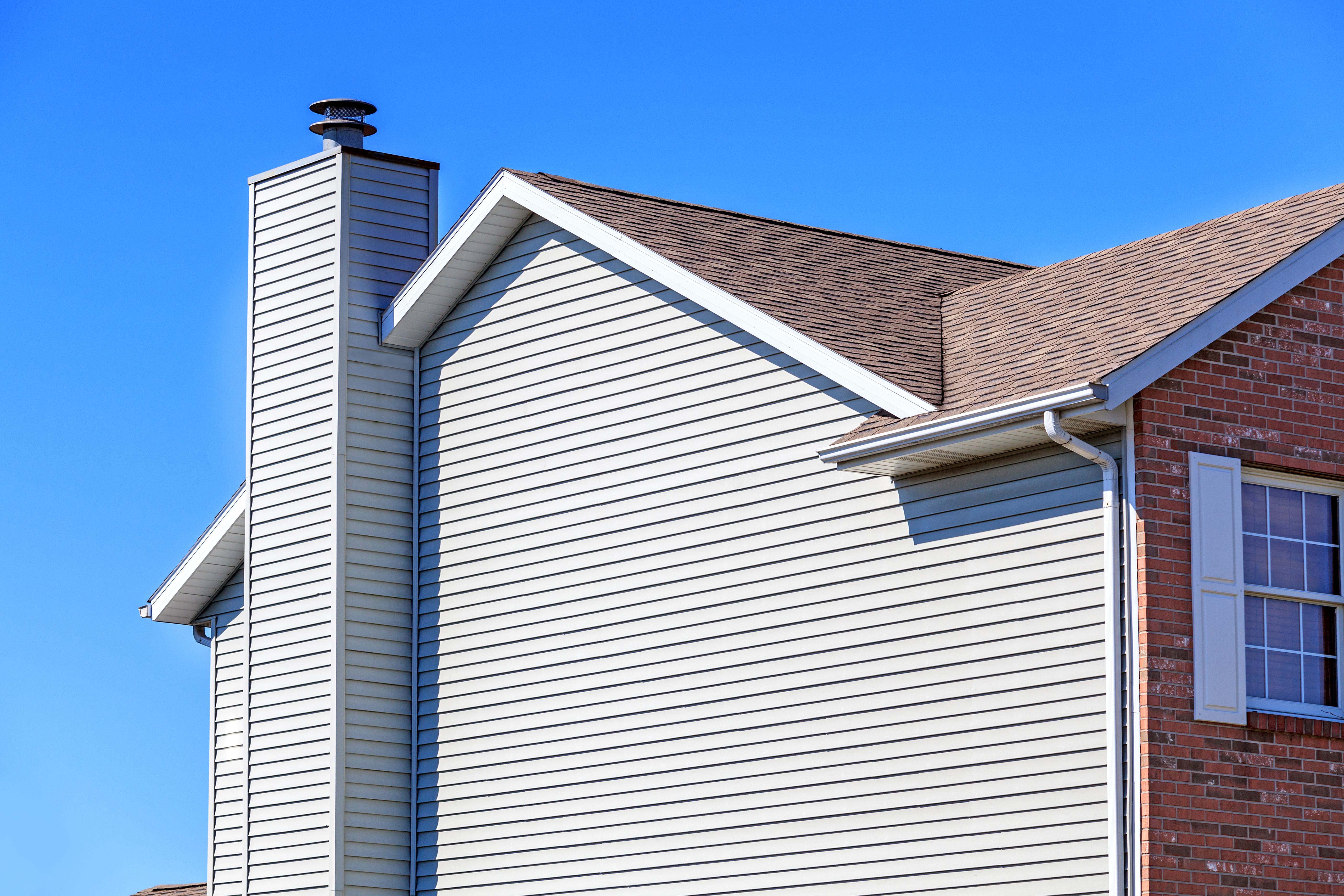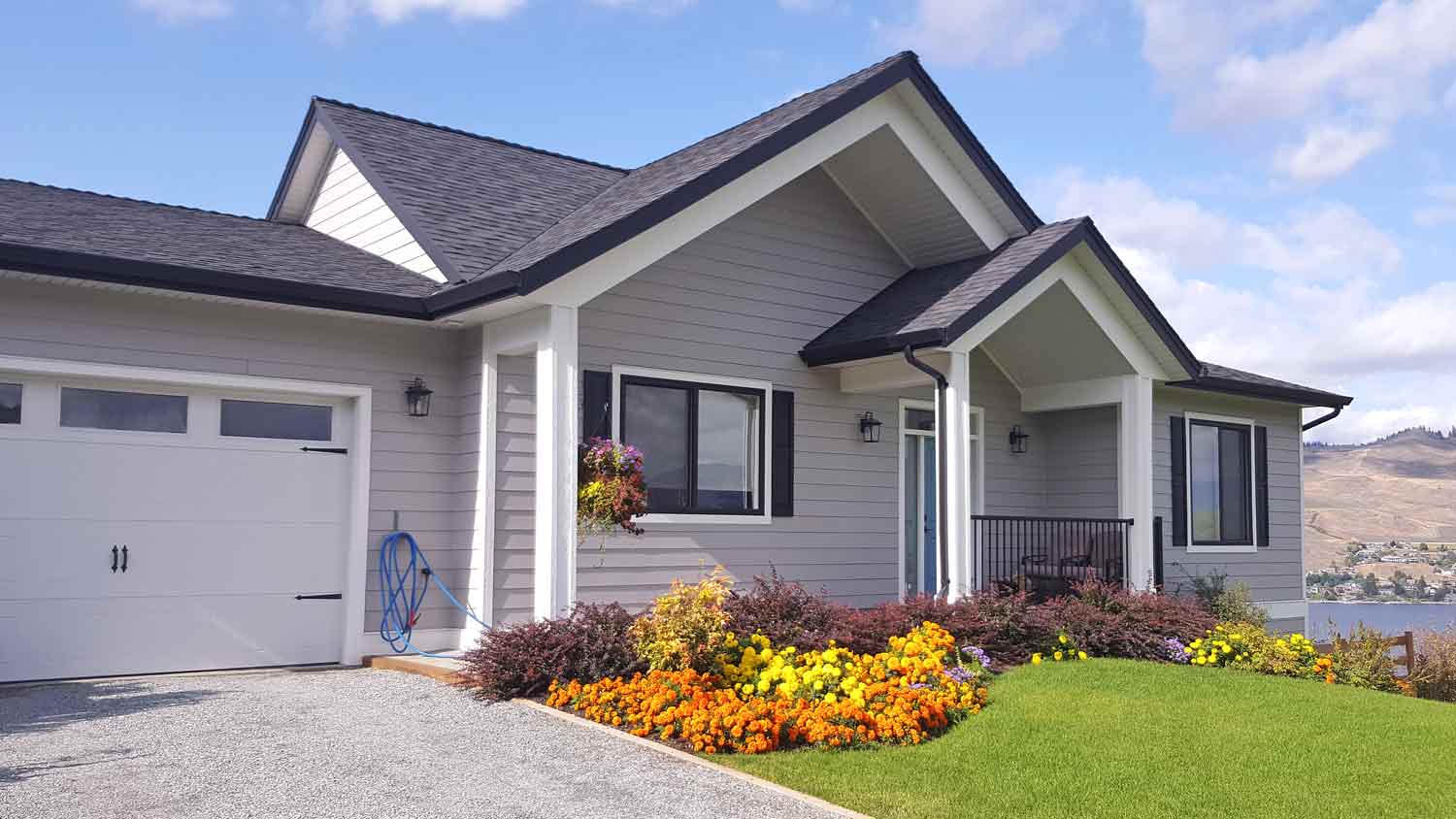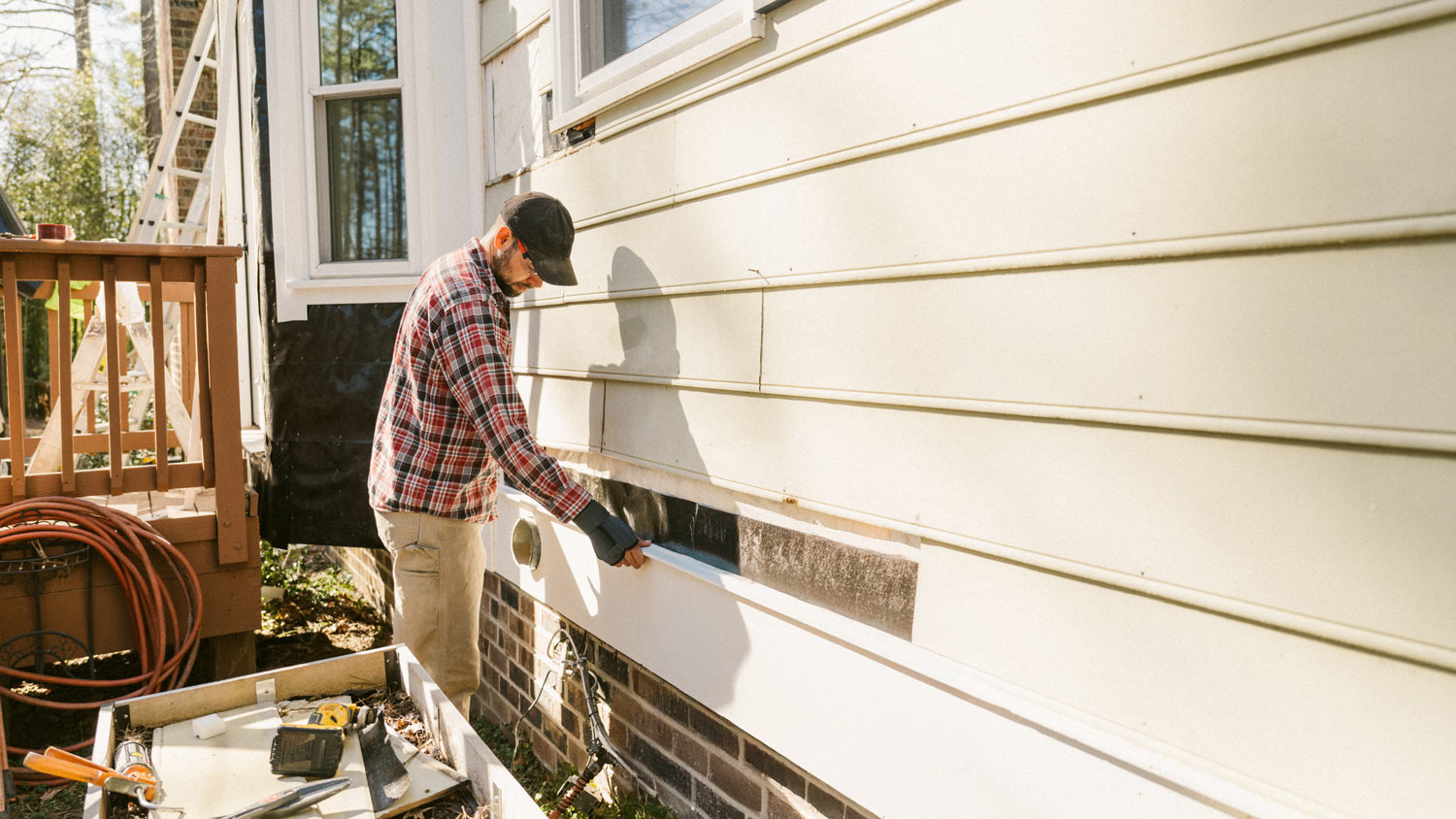
The cost of siding repair varies depending on material, design, and damage. This helpful guide covers the siding repair costs to expect in Columbus, Ohio.
Fiber cement siding installation costs in Dallas run around $8,853 on average, with most homeowners paying between $5,100 and $12,605. Price depends on your home’s size, design, and the type of fiber cement siding you choose.


Dallas siding contractors charge between $40 and $80 per hour, or $2 to $7 per square foot.
Dallas permit fees for siding work are based on square footage and start at $50.
Homes with complex layouts or storm damage may increase siding installation costs.
Removing old siding may reveal heat or storm damage that adds prep time and cost.
Dallas homeowners can recoup a 64% ROI on their new fiber cement siding.
Fiber cement siding installations in Dallas cost around $8,853 on average, but most homeowners pay between $5,100 and $12,605. The final price you’ll pay depends on things like the size of your home and whether crews run into issues like hard clay soil and storm damage, which are common in Dallas neighborhoods. This guide breaks down these and other cost factors so you can plan your fiber cement siding project with confidence.
Fiber cement siding installation costs depend on a few different factors. For example, in Dallas, installation crews may need to repair damage from big storms or prep sun-warped surfaces before installation, which drives up costs. Features like gables, porches, and multiple stories can also add time, labor, and cost.
Fiber cement siding costs between $7 and $18 per square foot on average, so larger homes naturally come with higher price tags. Complex layouts, like multi-story homes or those with dormers and bump-outs, can also add to labor costs since they require more time and equipment to work around.
| House Size in Square Feet | Average Fiber Cement Siding Cost |
|---|---|
| 800 | $13,000 |
| 1,000 | $15,000 |
| 1,500 | $18,200 |
| 2,000 | $21,300 |
| 3,000 | $25,000 |
The type of fiber cement siding you choose plays a big role in cost. For instance, simple plank styles are typically more affordable, while panels offer a more distinctive look but come with higher costs. Although each style has its perks, some types of fiber cement have downsides to consider.
| Fiber Cement Type | Cost per Sq. Ft. | Pros (Dallas) | Cons (Dallas) |
|---|---|---|---|
| Plank | $5–$14 | Clean, classic look that complements Dallas’s ranch-style and modern homes | May lack visual impact on large, contemporary builds without added trim |
| Panel | $6–$18 | Sleek and modern, ideal for newer builds and minimalist designs common in Dallas suburbs | Can look flat on traditional and craftsman-style homes |
| Shingle | $4–$14 | Great for adding texture to cottages and older craftsman-style homes in East Dallas | Slower to install and may need extra prep for wind-prone areas |
Removing old siding in Dallas can reveal problems like storm damage, dried-out caulking, and warped sheathing from years of heat exposure. While not always an issue, these surprises can add to your costs, so it’s smart to build a 10% to 20% buffer into your budget just in case. Also, if you opt for fiber cement shingles, expect some extra prep time (and cost) since each piece has to be carefully placed and layered, which can slow down the process and increase labor costs.
Dallas homes often include features like wraparound porches, gables, and mixed-material exteriors that can complicate fiber cement siding installations. These elements often take more time to work around and may require extra cutting and sealing to ensure a clean, weather-resistant finish, which can increase your costs.
Homes on narrow lots or those with limited side yard access, both of which are common in Dallas, can make it harder for crews to reach every part of the exterior, which can increase costs. Additionally, multi-story homes may require scaffolding or additional labor, further increasing the total installation cost.
Dallas siding jobs can generate a surprising amount of debris, especially if crews are removing old fiber cement or dealing with storm-damaged materials, which is common thanks to the region’s big storms. While basic cleanup is often included in the estimate, larger projects may require extra disposal efforts and costs to meet local waste regulations. In some cases, you may need to arrange for bulk pickup or rent a dumpster, which adds to the total project cost.
Working with an architect ranges from a few hundred to a few thousand dollars. An architect can elevate the look of your fiber cement siding, especially if you’re aiming for a custom design or blending different materials. But it also means added planning, longer timelines, and higher labor costs, particularly if the design calls for unusual cuts or installation techniques.
When hiring a siding contractor in Dallas, keep in mind that you’ll be paying for more than basic labor rates. Factors like permitting fees and taxes can potentially increase your costs, too.
Local siding contractors in Dallas charge between $40 and $80 per hour, or $2 to $7 per square foot. Homes with complex layouts, storm damage, or strict HOA guidelines may require contractors with specialized equipment and skills. That added expertise can raise the price, but it often helps prevent delays, code issues, and expensive installation mistakes.
Siding installations in Dallas require a residential building permit. The city calculates fees based on square footage rather than project value. Costs start at $50 for siding work, but can reach up to $300 or more for a full siding replacement.
Since Dallas updates their fee schedule regularly and pricing varies, it's best to check with the City of Dallas Building Inspection Department before getting started to get the exact costs for your specific siding project and avoid any surprises.
Dallas siding contractors need to register with the city's Building Inspection Division, which costs $120 annually and requires proof of insurance. Unlike many other states, Texas doesn't require a statewide contractor license, but Dallas requires local registration for exterior work like siding installations. Additionally, most contractors carry liability insurance with coverage often starting around $500,000. And workers' compensation is mandatory in Texas for businesses with employees.
While surety bonds aren't always required for siding work specifically, many contractors carry them anyway since they're needed for other types of projects and help build credibility with clients. These insurance and bonding requirements help protect homeowners from financial and legal risks, but they also add to the contractor's operating costs, which often get reflected in the final price you pay.
Materials used for fiber cement siding in Dallas are subject to sales tax, which is currently 8.25%. Labor for residential siding installation is not taxed, as long as labor charges are clearly separated from material costs on the invoice. But if your contractor bundles labor and materials into a single line item, you may be taxed for the full amount. To avoid this, ask for an itemized invoice that breaks out materials and labor separately.
Some Dallas siding projects call for more than a typical installation crew, especially if the home has storm damage, outdated construction, or hidden structural issues.
Architect: For homes with custom exteriors or strict HOA design rules, an architect can help plan a visually cohesive upgrade that meets certain codes and standards. Their fees fall between 5% and 20% of the total project cost, depending on the complexity of the work.
Structural Engineers: If your siding removal reveals framing damage, shifting walls, or supports with water damage, a structural engineer may be needed to assess the damage and provide safe repair plans. Expect to pay $350 to $800 for an onsite inspection and report.
Asbestos Abatement Contractors: Older homes, especially those built before the 1980s, may have siding materials that contain asbestos. If this is the case, removal must be handled by licensed pros and costs between $1,200 and $3,300.
Yes, installing fiber cement siding can significantly boost curb appeal and help your home look well-maintained and cared for, which is attractive to prospective buyers. Fiber cement typically offers a much better return on investment (ROI) compared to many other options, like vinyl siding, since it's considered a premium material that mimics the look of wood without the maintenance issues.
However, the ROI of fiber cement siding in Dallas is lower than the national average. Dallas homeowners recoup about 64% of their investment, compared to a 90% ROI nationally. The disparity is due to local market dynamics and relatively higher upfront installation costs.
Home is the most important place on earth, which is why Angi has helped more than 150 million homeowners transform their houses into homes they adore. To help homeowners with their next project, Angi provides readers with the most accurate cost data and upholds strict editorial standards. We survey real Angi customers about their project costs to develop the pricing data you see, so you can make the best decisions for you and your home. We pair this data with research from reputable sources, including the U.S. Bureau of Labor Statistics, academic journals, market studies, and interviews with industry experts—all to ensure our prices reflect real-world projects.
Want to help us improve our cost data? Send us a recent project quote to [email protected]. Quotes and personal information will not be shared publicly.
From average costs to expert advice, get all the answers you need to get your job done.

The cost of siding repair varies depending on material, design, and damage. This helpful guide covers the siding repair costs to expect in Columbus, Ohio.

In addition to protecting against extreme Midwest temperatures, new siding in Columbus adds curb appeal. Learn about siding replacement cost in Columbus.

New vinyl siding adds value and curb appeal to homes in Columbus, Ohio. Learn about average vinyl siding installation costs in Columbus, Ohio.

Lap siding is a common siding style available in various materials. Learn what lap siding is, its pros and cons, and how much it costs.

Picking between Hardie board and traditional cement board siding? Our comparison guide will help you decide.

Siding is a critical part of keeping your home protected from the elements and looking great. Learn what siding on a house is, how long it lasts, and what it costs.